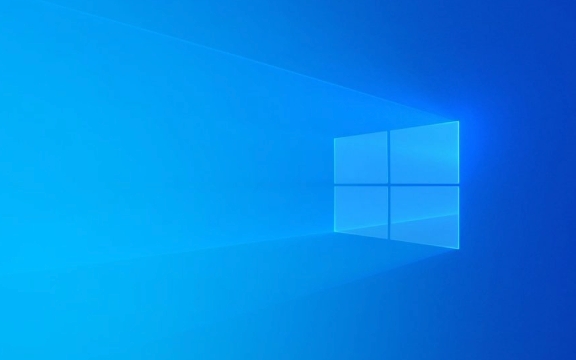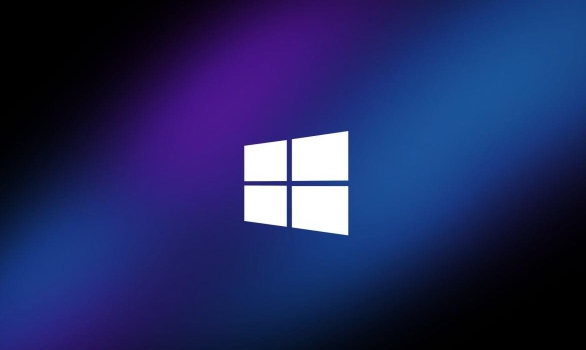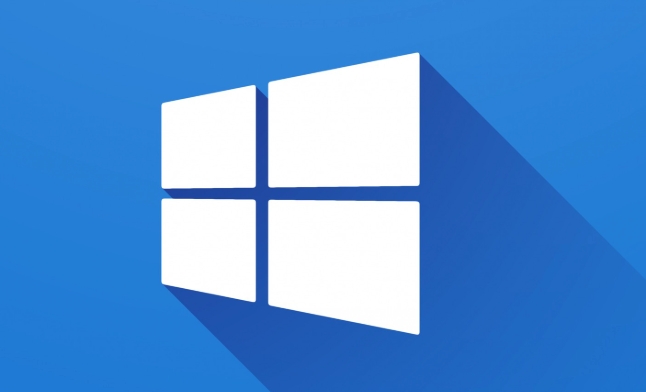AMD wins in 2024 for most users due to better multi-core performance, lower power consumption, longer platform support via the AM5 socket, and superior value over time; 1. In gaming, Intel holds a slight edge at 1080p with higher single-core performance, but AMD has narrowed the gap with Zen 4; 2. In productivity, AMD dominates with more cores and threads, excelling in rendering, editing, and multitasking; 3. For efficiency, AMD’s 5nm Zen 4 chips run cooler and use less power than Intel’s power-hungry 13th and 14th-gen CPUs; 4. Platform longevity favors AMD as AM5 supports future upgrades through at least 2025, while Intel moves to LGA 1851 in 2024, requiring new motherboards; 5. AMD offers better value with more cores per dollar, included coolers on many models, and lower overall platform costs, though Intel competes with promotions and strong single-threaded performance; integrated graphics are comparable, and AI features currently result in a tie, though Intel leads slightly in AI readiness.

When it comes to choosing a CPU for your PC, the debate almost always comes down to Intel vs. AMD. For decades, these two tech giants have been locked in a fierce battle for processor dominance. But which one really wins in 2024 and beyond? Let’s break it down across key areas like performance, efficiency, platform longevity, and value.

1. Performance: Gaming vs. Productivity
Gaming Performance
For pure gaming, especially at high frame rates and 1080p resolution, Intel has held a slight edge in recent generations—particularly with its Core i9 and i7 "K" series chips like the i9-13900K and i9-14900K. These processors offer higher clock speeds and stronger single-core performance, which benefits many games that don’t fully utilize multiple cores.
However, the gap has narrowed significantly. AMD’s Ryzen 7000 series (based on the Zen 4 architecture), such as the Ryzen 9 7950X, now competes closely, especially when paired with fast DDR5 memory and a good cooling solution. In titles optimized for multi-threading, AMD can even pull ahead.

Productivity & Multithreaded Workloads
Here, AMD continues to shine. Thanks to higher core and thread counts across its lineup, Ryzen chips dominate in content creation, video editing, 3D rendering, and software compilation. A Ryzen 9 7950X (16 cores, 32 threads) often outperforms similarly priced Intel chips in apps like Blender, Premiere Pro, and Handbrake.
Intel isn’t far behind, though—especially with its hybrid architecture (P-cores and E-cores) in the 13th and 14th-gen CPUs, which helps multitasking and heavy workloads. But AMD’s consistent core scaling gives it an edge in sustained throughput.

2. Power Efficiency & Thermals
This is where AMD pulls ahead in a big way.
- AMD’s Zen 4 architecture is built on a 5nm process, allowing for better power efficiency. Ryzen 7000 CPUs typically consume less power under load and run cooler than their Intel counterparts.
- Intel’s 13th and 14th-gen chips, while powerful, are notoriously power-hungry. The i9-14900K, for example, can draw over 250 watts under full load—demanding high-end cooling and robust power delivery from motherboards.
For users building compact systems, concerned about electricity costs, or prioritizing quiet operation, AMD’s efficiency is a major plus.
3. Platform Longevity & Upgrade Paths
One of AMD’s biggest advantages is platform longevity.
- The AM5 socket (used for Ryzen 7000 and newer) is expected to support future CPUs through at least 2025 and beyond, including upcoming Zen 5 chips.
- This means you can buy a B650 or X670 motherboard now and upgrade your CPU later without changing the motherboard.
Intel, on the other hand, has shifted sockets more frequently. The 12th, 13th, and 14th-gen CPUs use the LGA 1700 socket, which is now at the end of its life. The next generation (Arrow Lake, 2024) moves to LGA 1851, forcing another motherboard upgrade.
If you like to upgrade incrementally, AMD’s strategy is more user-friendly and cost-effective over time.
4. Value & Pricing
Let’s talk price.
- AMD often offers more cores and threads per dollar. The Ryzen 5 7600, for instance, delivers excellent 1080p gaming and solid productivity at a competitive price.
- Intel tends to be pricier at the high end, and you’ll need a more expensive motherboard (Z790) and better cooling to get the most out of its top chips.
That said, Intel frequently runs promotions, and used or previous-gen Intel CPUs (like the i5-13600K) can offer great value. But for new builds, AMD generally provides better long-term bang for the buck.
Also worth noting: AMD includes decent stock coolers with many of its CPUs (like the Wraith Stealth), while Intel only includes them on non-K models—another small cost saver.
5. Integrated Graphics & AI Features
- Integrated Graphics: AMD’s Ryzen 7000 desktop CPUs include basic Radeon Graphics, useful for troubleshooting or light tasks without a GPU. Intel’s UHD 770 is similarly capable, but both are weak compared to a dedicated GPU.
- AI & Future-Proofing: Intel is pushing hard into AI with Intel AI Boost and better support for AVX-512 and upcoming AI acceleration in Windows (like Copilot ). AMD is catching up with Ryzen AI, introduced in mobile chips and expected to expand to desktops with Zen 5.
For now, this is more of a tie—but Intel may have a slight edge in AI-driven workloads down the line.
So, Who Wins?
It depends on what you care about:
-
Choose AMD if you want:
- Better multi-core performance
- Lower power consumption and heat
- Longer platform support (AM5 socket)
- Better value over time
-
Choose Intel if you want:
- Slight gaming edge (especially at 1080p)
- Strong single-thread performance
- Better compatibility with older software
- More mature DDR5 tuning and overclocking (on Z790 boards)
For most users building a new PC in 2024, AMD offers a more balanced, future-proof, and efficient platform. But if you're a competitive esports gamer chasing every last frame, Intel’s top chips still have appeal.
The CPU war is closer than ever—but AMD currently holds the momentum.
Basically, it’s no longer a one-sided race. Both companies are pushing hard, and that’s great news for consumers.
The above is the detailed content of Intel vs. AMD: A Deep Dive into the CPU Battle. For more information, please follow other related articles on the PHP Chinese website!

Hot AI Tools

Undress AI Tool
Undress images for free

Undresser.AI Undress
AI-powered app for creating realistic nude photos

AI Clothes Remover
Online AI tool for removing clothes from photos.

Clothoff.io
AI clothes remover

Video Face Swap
Swap faces in any video effortlessly with our completely free AI face swap tool!

Hot Article

Hot Tools

Notepad++7.3.1
Easy-to-use and free code editor

SublimeText3 Chinese version
Chinese version, very easy to use

Zend Studio 13.0.1
Powerful PHP integrated development environment

Dreamweaver CS6
Visual web development tools

SublimeText3 Mac version
God-level code editing software (SublimeText3)
 How to set CPU performance to full in Win11
Feb 19, 2024 pm 07:42 PM
How to set CPU performance to full in Win11
Feb 19, 2024 pm 07:42 PM
Many users find that the computer is not running smoothly enough when using the Win11 system. They want to improve CPU performance, but they don't know how to do it. The following will introduce in detail how to set the CPU performance to the highest level in Win11 system to make your computer more efficient. Setting method: 1. Right-click "This PC" on the desktop and select "Properties" in the option list. 2. After entering the new interface, click "Advanced System Settings" in "Related Links". 3. In the window that opens, click the "Advanced" tab at the top, then click the & at the bottom of "Performance"
 What should the CPU utilization be when gaming?
Feb 19, 2024 am 11:21 AM
What should the CPU utilization be when gaming?
Feb 19, 2024 am 11:21 AM
It's common for games to slow down your computer because they consume a lot of resources. It's crucial to understand your CPU usage when gaming so you can avoid overloading it. Therefore, keeping track of appropriate CPU usage is key to keeping your gaming experience smooth. In this article, we'll look at the appropriate CPU usage you should achieve while your game is running. CPU utilization during gaming CPU utilization is an important indicator of processor workload and depends on the performance specifications of the CPU. More powerful CPUs generally have higher usage. A CPU with more cores and threads can improve the overall performance of your system. Multi-threading support helps unleash the full potential of your CPU. In games, CPU usage depends on processor utilization, which can affect the game
 The operation process of WIN10 service host occupying too much CPU
Mar 27, 2024 pm 02:41 PM
The operation process of WIN10 service host occupying too much CPU
Mar 27, 2024 pm 02:41 PM
1. First, we right-click the blank space of the taskbar and select the [Task Manager] option, or right-click the start logo, and then select the [Task Manager] option. 2. In the opened Task Manager interface, we click the [Services] tab on the far right. 3. In the opened [Service] tab, click the [Open Service] option below. 4. In the [Services] window that opens, right-click the [InternetConnectionSharing(ICS)] service, and then select the [Properties] option. 5. In the properties window that opens, change [Open with] to [Disabled], click [Apply] and then click [OK]. 6. Click the start logo, then click the shutdown button, select [Restart], and complete the computer restart.
 How to increase the clock frequency of your computer's CPU
Feb 20, 2024 am 09:54 AM
How to increase the clock frequency of your computer's CPU
Feb 20, 2024 am 09:54 AM
How to Overclock Computer CPUs With the continuous advancement of technology, people's demand for computer performance is also getting higher and higher. An effective way to improve computer performance is to increase the CPU's operating frequency through overclocking. Overclocking allows the CPU to process data faster, providing higher computing power. So, how to overclock a computer CPU? The following will introduce you to the basic principles and specific operation methods of overclocking. First, let's understand how overclocking works. The operating frequency of the CPU is determined by the crystal oscillator on the motherboard
 How to undervolt and overclock your CPU using Intel XTU
Feb 19, 2024 am 11:06 AM
How to undervolt and overclock your CPU using Intel XTU
Feb 19, 2024 am 11:06 AM
Intel XTU is a powerful application that allows you to easily manage your computer's performance. You can fix overheating issues by adjusting the CPU voltage, or boost performance by overclocking. In this article, we'll look at how you can take advantage of Intel XTU to optimize your computer's performance, whether that's adjusting voltage or overclocking. What effect do undervolting and overclocking have on the CPU? Before we move on to learning how to undervolt and overclock a CPU, we first have to understand what they are. Undervolting refers to gradually reducing the voltage required by the CPU. This process helps reduce heat emissions, as high voltage results in higher temperatures. By reducing the voltage supply to the CPU, the temperature can be effectively reduced. If your laptop starts to slow down after getting hot, you should solve the problem promptly.
 The difference between boxed and bulk cpu
Jan 23, 2024 am 09:46 AM
The difference between boxed and bulk cpu
Jan 23, 2024 am 09:46 AM
The differences between boxed and bulk CPUs: 1. Quality; 2. Warranty period; 3. Fan; 4. Price; 5. Packaging; 6. Sales channels. Detailed introduction: 1. Quality, whether it is boxed or bulk, there is no difference in the quality of the CPU itself. They are all manufactured by the same manufacturer and undergo the same quality testing and quality control process; 2. Warranty period, boxed CPU A longer warranty period is usually provided, usually three years, while bulk CPUs usually only have a one-year warranty, this is because boxed CPUs are usually sold by official or authorized dealers, etc.
 Leak reveals key specs of Intel Arrow Lake-U, -H, -HX and -S
Jun 15, 2024 pm 09:49 PM
Leak reveals key specs of Intel Arrow Lake-U, -H, -HX and -S
Jun 15, 2024 pm 09:49 PM
IntelArrowLakeisexpectedtobebasedonthesameprocessorarchitectureasLunarLake,meaningthatIntel'sbrandnewLionCoveperformancecoreswillbecombinedwiththeeconomicalSkymontefficiencycores.WhileLunarLakeisonlyavailableasava
 144-core, 3D-stacked SRAM: Fujitsu details next-generation data center processor MONAKA
Jul 29, 2024 am 11:40 AM
144-core, 3D-stacked SRAM: Fujitsu details next-generation data center processor MONAKA
Jul 29, 2024 am 11:40 AM
According to news from this website on July 28, foreign media TechRader reported that Fujitsu introduced in detail the FUJITSU-MONAKA (hereinafter referred to as MONAKA) processor planned to be shipped in 2027. MONAKACPU is based on the "cloud native 3D many-core" architecture and adopts the Arm instruction set. It is oriented to the data center, edge and telecommunications fields. It is suitable for AI computing and can realize mainframe-level RAS1. Fujitsu said that MONAKA will achieve a leap in energy efficiency and performance: thanks to technologies such as ultra-low voltage (ULV) technology, the CPU can achieve 2 times the energy efficiency of competing products in 2027, and cooling does not require water cooling; in addition, the application performance of the processor It can also reach twice as much as your opponent. In terms of instructions, MONAKA is equipped with vector






